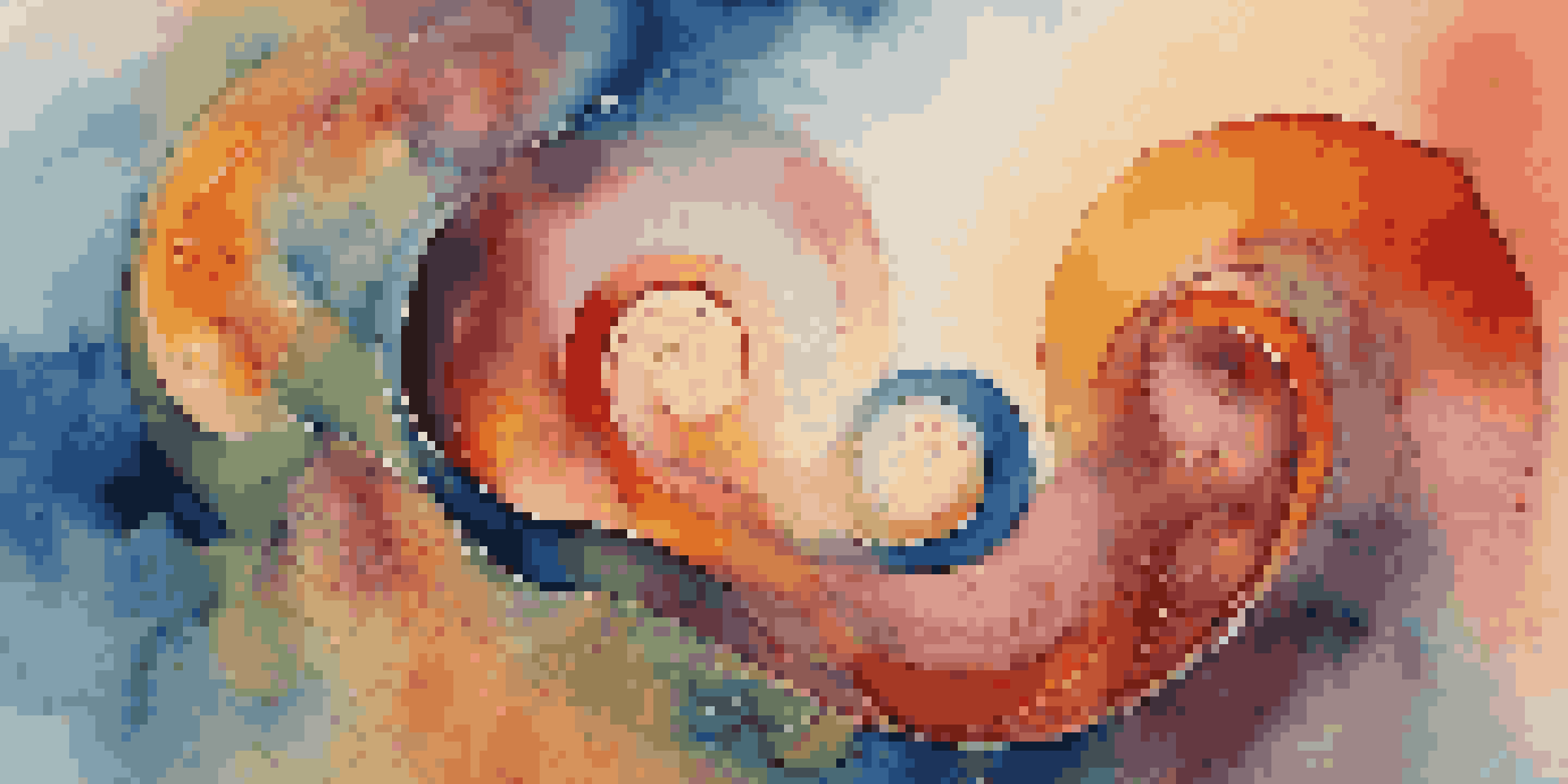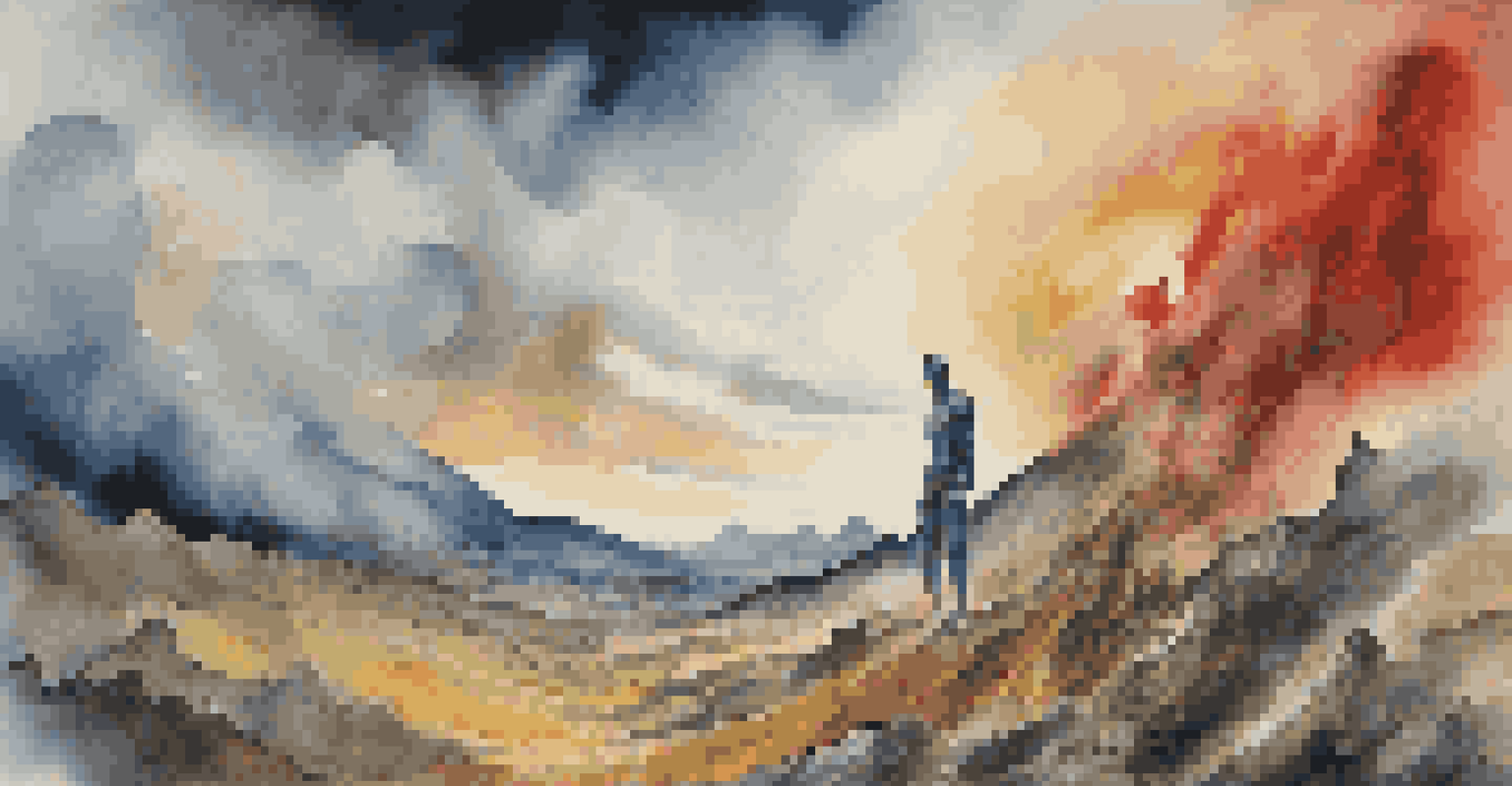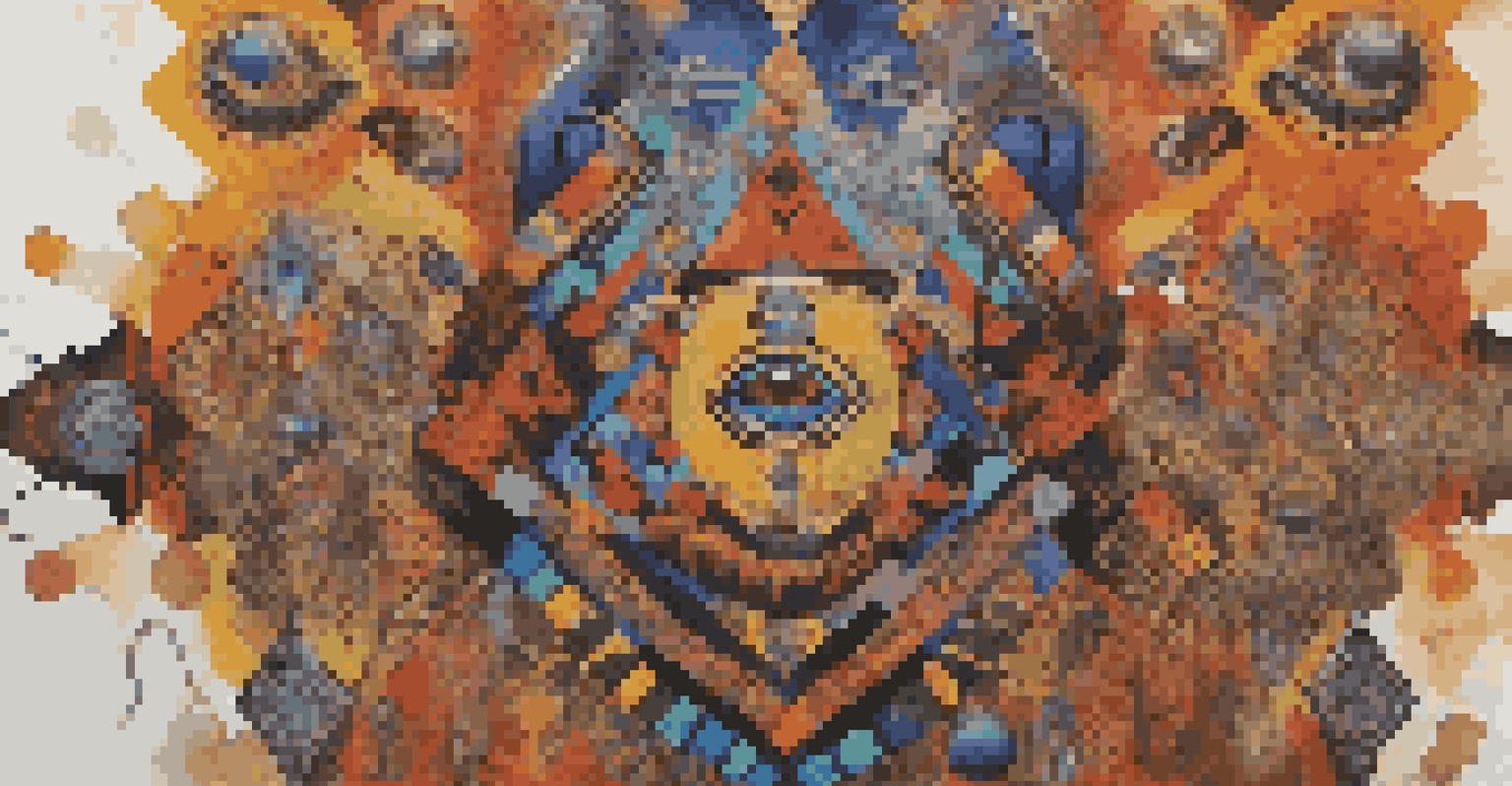The Influence of Mythology on Abstract Art and Expressionism

Understanding Mythology's Role in Art
Mythology serves as a rich tapestry of narratives that artists have drawn from for centuries. These stories, filled with gods, heroes, and moral lessons, provide a deep well of inspiration. Artists often use these myths to explore universal themes such as love, conflict, and transformation, allowing viewers to connect on a more emotional level.
Mythology is not a lie; mythology is poetry, it is the very essence of truth.
The symbols and archetypes found in mythology resonate with human experiences, making them timeless. For instance, the figure of a hero overcoming challenges can be seen in countless artistic interpretations. By tapping into these familiar tales, artists can convey complex ideas without the need for literal representation.
In the realms of abstract art and expressionism, these mythological influences can manifest in various ways. Rather than depicting a specific story, artists often evoke the essence of these myths through color, form, and texture, creating a dialogue between the artwork and the viewer's imagination.
Mythology and Abstract Art: A Visual Connection
Abstract art often breaks the boundaries of traditional representation, focusing instead on conveying emotions and ideas through non-representational forms. Mythology plays a crucial role here, as artists infuse their works with the essence of mythic themes, creating an emotional resonance. For example, Wassily Kandinsky often sought to express spiritual truths through abstract compositions, drawing on mythological concepts.

The use of bold colors and sweeping shapes in abstract art can reflect the drama and intensity of mythological narratives. Artists like Joan Miró and Paul Klee incorporated symbols derived from mythology to create works that invite viewers to engage with the deeper meanings behind their forms. This fusion allows for a unique interpretation of myths, transforming them into visual experiences.
Mythology Inspires Artistic Expression
Artists draw on rich mythological narratives to explore universal themes and emotions in their work.
In this way, mythology enriches abstract art by providing a framework through which emotions and concepts can be explored. The viewer is left to decipher their own meanings, encouraging an interactive and personal connection to the artwork.
Expressionism: Channeling the Mythic Experience
Expressionism, much like abstract art, seeks to convey emotional experiences rather than depict reality. Mythology, with its dramatic stories and larger-than-life characters, serves as a powerful influence on expressionist artists. The raw emotions found in myths resonate deeply, allowing artists to channel these feelings into their works.
Art is the most beautiful of all lies; the artist creates an illusion of reality that is more real than reality itself.
For example, Edvard Munch's iconic piece 'The Scream' can be seen as echoing the existential angst found in mythological tales of tragedy and loss. By tapping into these mythic themes, expressionist artists evoke a visceral response from their audience, creating a shared emotional landscape. This connection often transcends time and culture, making the artwork universally relatable.
Thus, mythology enriches expressionism by providing a deep emotional foundation. Artists can draw on these narratives to express their inner turmoil and societal concerns, creating works that resonate with viewers on multiple levels.
Symbolism in Abstract Art and Myth
Symbols play a crucial role in both mythology and abstract art, serving as visual shorthand for complex ideas. Artists often use these symbols to encapsulate the essence of mythical narratives, allowing for deeper engagement. For instance, the spiral can represent the journey of life and transformation, a theme prevalent in many myths.
As abstract artists incorporate these symbols, they invite viewers to explore their meanings while engaging with the artwork. The symbol becomes a bridge between the artist's intention and the viewer's interpretation, enriching the experience. This interplay encourages a dialogue that transcends language and culture.
Cultural Myths Shape Artistic Styles
Different cultures infuse their unique mythologies into art, creating works that resonate with both local and global audiences.
Moreover, the use of symbols allows artists to create layers of meaning within their works. Each brushstroke or form can carry mythological weight, inviting viewers to delve deeper into the narratives that inform the artwork.
Cultural Myths and Artistic Expression
Different cultures have their own unique mythologies, which significantly influence local artistic expressions. Artists often draw from their cultural backgrounds, infusing their works with the essence of their heritage. This not only preserves these stories but also adapts them for contemporary audiences.
For instance, the vibrant colors and patterns in African art often reflect the rich storytelling traditions of the continent's myths. Similarly, Native American artists may incorporate elements of their spiritual beliefs into abstract forms, creating a dialogue between tradition and modernity. This cultural interplay enriches both the art and the viewing experience.
By embracing their cultural myths, artists create works that resonate with their communities while also appealing to a wider audience. The universal themes found in these myths foster connections that bridge cultural divides, showcasing the shared human experience.
The Evolution of Mythological Themes in Art
As art movements evolve, so too do the ways in which mythology is interpreted and represented. Modern artists often challenge traditional narratives, reimagining myths to reflect contemporary issues. This evolution allows for a fresh perspective that resonates with today’s audiences.
For example, contemporary artists like Yoko Ono and Ai Weiwei draw on mythological elements to critique societal norms and injustices. By reinterpreting these age-old stories, they create provocative works that encourage viewers to reflect on the present. This approach keeps mythology alive and relevant in the modern art world.
Modern Art Reinterprets Ancient Myths
Contemporary artists challenge traditional mythological narratives, adapting them to address modern societal issues.
In this ongoing dialogue, mythology serves as a lens through which artists can explore their cultural and personal identities. This evolution ensures that mythological themes remain a vital source of inspiration in abstract art and expressionism.
Conclusion: The Lasting Impact of Mythology on Art
The influence of mythology on abstract art and expressionism is profound, offering artists a wealth of inspiration to draw from. These ancient stories and symbols provide a framework for exploring complex emotions and ideas, making them timeless. As artists continue to reinterpret and adapt these narratives, they ensure that mythology remains a vital part of the artistic landscape.
Moreover, the interplay between mythology and modern artistic movements fosters a deeper connection between the artwork and the viewer. By engaging with these themes, audiences can find personal relevance in the narratives, enriching their overall experience. This connection not only enhances appreciation for the art but also encourages dialogue about the myths that shape our understanding of the world.

In essence, mythology not only informs artistic expression but also invites us to explore our collective human experience through the lens of creativity.